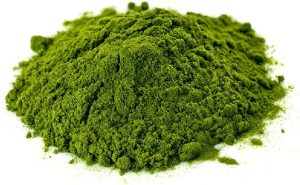
- Overview of Vitamin C, a.k.a Ascorbic Acid
- Brief History of Vitamin C, a.k.a Ascorbic Acid
- Functions of Vitamin C, a.k.a Ascorbic Acid
- Recommended Daily Intake (RDI), Recommended Dietary Allowance (RDA), Adequate Intake (AI) or Reference Nutrient Intake (RNI) for Vitamin C, a.k.a Ascorbic Acid
- Deficiency of Vitamin C, a.k.a Ascorbic Acid
- Food Sources of Vitamin C, a.k.a Ascorbic Acid
- Vitamin C, a.k.a Ascorbic Acid and Its Interaction with Other Medications
- Websites and Articles to Delve into the Benefits of Vitamin C, a.k.a Ascorbic Acid
- Disclaimer
Overview of Vitamin C, a.k.a Ascorbic Acid
Vitamin C, or ascorbic acid, is a water-soluble vitamin essential for numerous physiological functions in the human body.
As a potent antioxidant, it helps protect cells from oxidative damage, supports the immune system, and promotes the synthesis of collagen—a vital protein for skin, blood vessels, and connective tissues.
Found abundantly in fruits and vegetables, particularly citrus fruits, strawberries, and bell peppers, vitamin C is crucial for overall health. Its role in enhancing iron absorption, contributing to wound healing, and combating infections underscores its significance.
While a deficiency can lead to scurvy, characterized by fatigue, swollen gums, and joint pain, maintaining a balanced diet rich in vitamin C sources is fundamental for optimal health and well-being.
Brief History of Vitamin C, a.k.a Ascorbic Acid
The history of vitamin C is marked by scientific discoveries and advancements in understanding its importance in human health. The recognition of vitamin C began in the early 20th century:
- Scurvy and James Lind:
- The link between citrus fruits and the prevention of scurvy, a disease characterized by weakness, swollen gums, and fatigue, was noted by sailors for centuries. In the mid-18th century, British naval surgeon James Lind conducted experiments, demonstrating that citrus fruits like lemons and oranges were effective in preventing and treating scurvy.
- Identification of Vitamin C:
- In the early 20th century, researchers Albert Szent-Györgyi and Charles Glen King independently isolated a substance from adrenal glands and cabbage that could prevent and cure scurvy. Szent-Györgyi named it “hexuronic acid,” which was later identified as ascorbic acid.
- Synthesis of Ascorbic Acid:
- In 1933, the Nobel Prize in Physiology or Medicine was awarded to Albert Szent-Györgyi for his work on vitamin C. In the same year, Sir Walter Norman Haworth and his team successfully synthesized ascorbic acid, contributing to the mass production of vitamin C and its availability for supplementation and fortification.
- Discovery of its Role in Collagen Synthesis:
- Over the years, research revealed vitamin C’s crucial role in collagen synthesis, wound healing, and its antioxidant properties. Linus Pauling, a Nobel laureate, emphasized the importance of vitamin C in higher doses than the established Recommended Dietary Allowance (RDA), leading to increased public awareness.
| Time Period | Key Events and Individuals |
|---|---|
| Scurvy and James Lind (18th Century) | – Sailors noted the link between citrus fruits and scurvy symptoms. |
| – British naval surgeon James Lind conducted experiments demonstrating the effectiveness of citrus fruits. | |
| Identification of Vitamin C (Early 20th Century) | – Researchers Albert Szent-Györgyi and Charles Glen King independently isolated a substance preventing scurvy. |
| – Szent-Györgyi named it “hexuronic acid,” later identified as ascorbic acid. | |
| Synthesis of Ascorbic Acid (1933) | – Albert Szent-Györgyi received the Nobel Prize in Physiology or Medicine for his vitamin C work. |
| – Sir Walter Norman Haworth and team successfully synthesized ascorbic acid, allowing mass production. | |
| Discovery of its Role (Ongoing) | – Research revealed vitamin C’s role in collagen synthesis, wound healing, and its antioxidant properties. |
| – Linus Pauling emphasized higher doses of vitamin C, contributing to increased public awareness. |
Today, vitamin C remains a vital nutrient, and its history reflects the collaborative efforts of scientists in understanding and harnessing its health benefits for the prevention of scurvy and promotion of overall well-being.
Functions of Vitamin C, a.k.a Ascorbic Acid
Vitamin C, also known as ascorbic acid, plays several important roles in the human body:
- Antioxidant Defense:
- Vitamin C is a powerful antioxidant that helps protect cells from damage caused by free radicals. It neutralizes reactive oxygen species, reducing oxidative stress and lowering the risk of chronic diseases.
- Collagen Synthesis:
- Vitamin C is essential for the synthesis of collagen, a structural protein that provides strength and elasticity to connective tissues, skin, blood vessels, and bones. It contributes to wound healing and the maintenance of healthy skin.
- Immune System Support:
- Vitamin C supports the immune system by enhancing the function of white blood cells and promoting the production of interferons, proteins that help coordinate the body’s response to infections.
- Iron Absorption:
- Vitamin C enhances the absorption of non-heme iron (the type of iron found in plant-based foods) from the digestive tract. Consuming vitamin C-rich foods with iron-rich plant sources can improve iron bioavailability.
- Neurotransmitter Synthesis:
- Vitamin C is involved in the synthesis of neurotransmitters, such as serotonin and norepinephrine, which play a role in mood regulation and cognitive function.
- Antiviral and Antibacterial Properties:
- Vitamin C exhibits antiviral and antibacterial properties, contributing to the body’s defense against infections.
- Regeneration of Vitamin E:
- Vitamin C helps regenerate vitamin E, another important antioxidant, by reducing oxidized vitamin E back to its active form.
- Skin Health:
- Beyond collagen synthesis, vitamin C contributes to skin health by protecting against UV damage, promoting the repair of damaged skin cells, and helping to maintain skin elasticity.
A balanced and varied diet that includes fruits and vegetables, especially citrus fruits, strawberries, bell peppers, and broccoli, can provide adequate vitamin C. While deficiency is rare, maintaining optimal levels of vitamin C through diet or supplements is important for overall health and well-being.
Recommended Daily Intake (RDI), Recommended Dietary Allowance (RDA), Adequate Intake (AI) or Reference Nutrient Intake (RNI) for Vitamin C, a.k.a Ascorbic Acid
The Recommended Dietary Allowance (RDA) for vitamin C can vary depending on factors such as age, sex, and life stage. Different countries or health organizations may use different terms to express these recommendations. Here are some commonly used terms:
- Recommended Dietary Allowance (RDA):
- In the United States, the RDA for vitamin C is expressed in milligrams (mg) per day. As of my last update, the RDA for adult men is 90 mg per day, and for adult women, it is 75 mg per day. Pregnant and breastfeeding women may have higher RDAs.
- Adequate Intake (AI):
- The AI is used when there is insufficient scientific evidence to establish an RDA. For vitamin C, the AI is often set at levels assumed to ensure nutritional adequacy. The AI for vitamin C for adult men and women is 90 mg per day.
- Reference Nutrient Intake (RNI):
- This term is used in some countries, including the United Kingdom. The RNI for vitamin C is given in milligrams per day. The RNI for adults is 40 mg per day.
| RDA (milligrams/day) | AI (milligrams/day) | RNI (milligrams/day) | |
|---|---|---|---|
| Adult Men | 90 | 90 | 40 |
| Adult Women | 75 | 90 | 40 |
It’s essential to note that these recommendations may be subject to updates, and individual requirements can vary. Consultation with healthcare professionals or referring to the latest dietary guidelines in your region is recommended for accurate and up-to-date information on vitamin C intake.
Deficiency of Vitamin C, a.k.a Ascorbic Acid
Vitamin C deficiency, also known as scurvy, occurs when there is an inadequate intake of vitamin C over an extended period. Vitamin C is crucial for various bodily functions, and its deficiency can lead to a range of symptoms and health problems. Common signs and consequences of vitamin C deficiency include:
- Fatigue and Weakness:
- Vitamin C plays a role in energy metabolism, and its deficiency can lead to feelings of fatigue and weakness.
- Joint and Muscle Aches:
- Scurvy can cause joint and muscle pain, making movement uncomfortable.
- Swollen and Bleeding Gums:
- One of the classic signs of scurvy is bleeding gums. Collagen synthesis, dependent on vitamin C, is essential for maintaining the integrity of blood vessels and connective tissues, including gums.
- Petechiae and Bruising:
- Small, red or purple spots on the skin (petechiae) and easy bruising can result from weakened blood vessels due to vitamin C deficiency.
- Anemia:
- Vitamin C enhances the absorption of non-heme iron (found in plant-based foods). Its deficiency may contribute to anemia.
- Dry and Sensitive Skin:
- Collagen is vital for skin health, and a lack of vitamin C can lead to dry, rough, and sensitive skin.
- Impaired Wound Healing:
- Vitamin C is essential for the synthesis of collagen, which is crucial for wound healing. Deficiency can lead to delayed healing of cuts and wounds.
- Depression and Mood Changes:
- Some studies suggest a link between vitamin C deficiency and mood disorders, including depression.
The best way to prevent vitamin C deficiency is through a well-balanced diet that includes fruits and vegetables rich in vitamin C, such as citrus fruits, strawberries, bell peppers, broccoli, and kiwi. Severe deficiency requires prompt medical attention, and treatment typically involves vitamin C supplementation. If you suspect a vitamin C deficiency, consult with a healthcare professional for appropriate evaluation and guidance.
Food Sources of Vitamin C, a.k.a Ascorbic Acid
Vitamin C is abundant in various fruits and vegetables. Including these foods in your diet can help you meet your daily vitamin C requirements. Here are some food sources of vitamin C and where to find them:
- Citrus Fruits:
- Sources: Oranges, grapefruits, lemons, limes.
- Where to Get: These fruits are commonly available in grocery stores and local markets.
- Berries:
- Sources: Strawberries, blueberries, raspberries, blackberries.
- Where to Get: You can find fresh or frozen berries in supermarkets, farmer’s markets, or local fruit stands.
- Tropical Fruits:
- Sources: Pineapple, mango, papaya, kiwi, guava.
- Where to Get: Tropical fruits are often available in grocery stores, ethnic markets, and stores specializing in international produce.
- Melons:
- Sources: Cantaloupe, watermelon.
- Where to Get: Melons are typically found in most grocery stores, particularly during the summer season.
- Stone Fruits:
- Sources: Peaches, nectarines, plums.
- Where to Get: Stone fruits are available in grocery stores, farmers’ markets, and local orchards.
- Vegetables:
- Sources: Red and green bell peppers, broccoli, Brussels sprouts, spinach, kale, tomatoes, potatoes.
- Where to Get: These vegetables can be found in grocery stores, farmers’ markets, and local produce stands.
- Other Vegetables:
- Sources: Cauliflower, cabbage, winter squash.
- Where to Get: These vegetables are commonly available in grocery stores and local markets.
- Herbs:
- Sources: Parsley, thyme, cilantro.
- Where to Get: Fresh herbs are often found in the produce section of grocery stores or can be grown in home gardens.
Including a variety of these vitamin C-rich foods in your daily meals ensures a well-rounded and nutritious diet. Fresh, locally sourced produce is ideal, but frozen fruits and vegetables can also be convenient options, especially when certain items are out of season.
Vitamin C, a.k.a Ascorbic Acid and Its Interaction with Other Medications
Vitamin C (ascorbic acid) is generally considered safe and well-tolerated, but it can interact with certain medications. It’s essential to be aware of these interactions and consult with a healthcare professional if you have concerns. Here are some notable interactions:
- Aspirin and Other Blood Thinners (Anticoagulants):
- Vitamin C may enhance the anticoagulant effects of aspirin and other blood-thinning medications, potentially increasing the risk of bleeding. Close monitoring and adjustment of medication dosage may be necessary.
- Aluminum-Containing Antacids:
- Vitamin C may increase the absorption of aluminum from certain antacids, potentially leading to higher levels of aluminum in the body. This interaction is more relevant for individuals with kidney issues.
- Barbiturates and Phenytoin (Antiepileptic Drugs):
- These medications may reduce the effectiveness of vitamin C. Individuals taking antiepileptic drugs may require higher vitamin C intake.
- Chemotherapy Drugs:
- Vitamin C may interfere with the action of certain chemotherapy drugs. It’s crucial for individuals undergoing cancer treatment to discuss vitamin C supplementation with their oncologist.
- Oral Contraceptives (Birth Control Pills):
- Long-term use of oral contraceptives may reduce vitamin C levels in the body. Supplemental vitamin C may be beneficial for individuals on birth control pills.
- Statins (Cholesterol-Lowering Medications):
- Some evidence suggests that vitamin C may enhance the cholesterol-lowering effects of statins. This interaction may be positive, but it’s advisable to consult with a healthcare provider.
- Iron Supplements:
- Vitamin C enhances the absorption of non-heme iron from plant-based foods and supplements. While this is generally beneficial, individuals with iron overload disorders should exercise caution.
It’s crucial to inform your healthcare provider about all medications, supplements, and vitamins you are taking to ensure there are no potential interactions. They can provide personalized advice based on your health status and the specific medications you are using. As with any supplement, moderation is key, and taking excessive doses of vitamin C can lead to adverse effects. Always follow healthcare professionals’ recommendations regarding supplementation.
Websites and Articles to Delve into the Benefits of Vitamin C, a.k.a Ascorbic Acid
Here’s a summary about Vitamin C from the some reputable websites:
- Harvard T.H. Chan School of Public Health:
- Discusses the benefits of Vitamin C, its sources, recommended intake, and its role in health, including its antioxidant properties.
- Wikipedia:
- Offers a comprehensive overview of Vitamin C, covering its chemical structure, sources, functions, deficiency, and related health effects.
- Mayo Clinic:
- Provides information on Vitamin C, its uses, benefits, recommended intake, and potential risks associated with deficiency or excess.
- National Institutes of Health (NIH) – Office of Dietary Supplements:
- Presents a health professional fact sheet on Vitamin C, including details on its functions, sources, recommended dietary allowances, and potential health benefits.
- Healthline:
- Discusses the benefits of Vitamin C, its role in the body, recommended intake, and potential health effects.
- WebMD:
- Offers information on Vitamin C (ascorbic acid), its uses, benefits, and potential side effects.
- MedlinePlus:
- Provides an overview of Vitamin C, covering its functions, sources, recommended intake, and potential health issues associated with deficiency.
- Healthline – Vitamin C Foods:
- Lists various foods rich in Vitamin C and discusses the importance of including them in the diet.
- MedlinePlus – Encyclopedia:
- Offers information on Vitamin C, its role in the body, recommended intake, and potential health effects.
- Verywell Health:
- Discusses the benefits of Vitamin C supplements and their potential impact on health.
- Medical News Today:
- Provides information on Vitamin C, its sources, benefits, and potential risks.
- Mount Sinai Health System:
- Offers information on Vitamin C (ascorbic acid), its sources, functions, and potential health benefits.
- Healthdirect Australia:
- Discusses the importance of Vitamin C for health and its sources.
- Linus Pauling Institute – Oregon State University:
- Provides in-depth information on Vitamin C, covering its functions, sources, recommended intake, and potential health effects.
- Health.com:
- Discusses the benefits, uses, and potential side effects of Vitamin C.
- University of Rochester Medical Center:
- Offers an overview of Vitamin C, its sources, functions, and potential health benefits.
- EatRight – Academy of Nutrition and Dietetics:
- Explains how Vitamin C supports a healthy immune system and its role in overall health.
These sources collectively cover a wide range of information on Vitamin C, including its benefits, sources, recommended intake, and potential health effects. It’s advisable to consult with healthcare professionals for personalized advice regarding nutrition and supplements.
Disclaimer
The information is solely provided for educational purposes. It is not intended to diagnose, treat, cure, or prevent any disease. Seek the advice of your physician or qualified healthcare provider with any questions you may have regarding a medical condition at all times. Never disregard professional medical advice because of something you have read or learned from this article.






